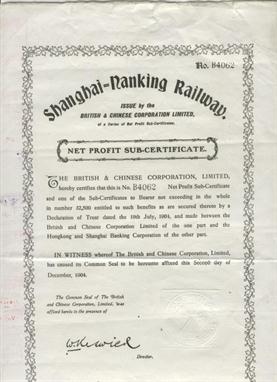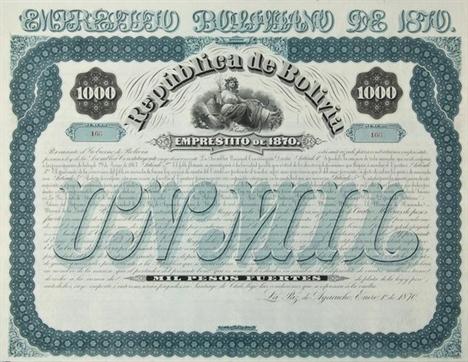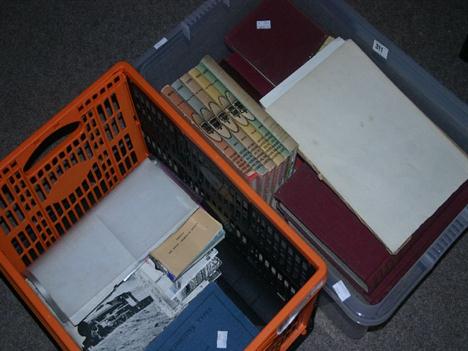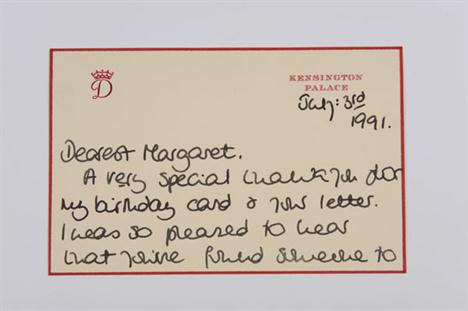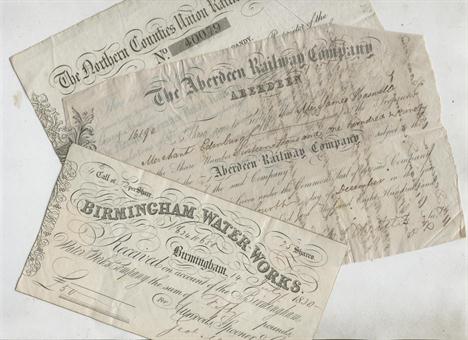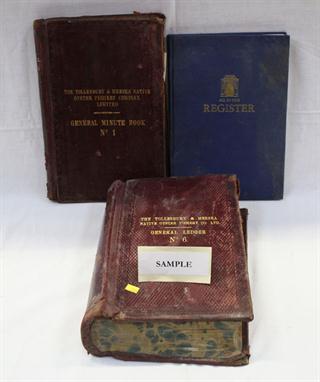We found 4924 price guide item(s) matching your search
There are 4924 lots that match your search criteria. Subscribe now to get instant access to the full price guide service.
Click here to subscribe- List
- Grid
-
4924 item(s)/page
MOORE BOBBY: (1941-1993) English Footballer, Captain of the England World Cup winning team, 1966. A Bank of England £5 note signed and inscribed by Moore in blue ink, `Fraser-In case you haven`t p[aid] for the petrol last year! Make [sur]e Mike gets back on time-pleas[e] Bobby`. A vertical tear running through the note has been repaired with sellotape causing slight staining and obscuring a few letters of text. Unusual in this form. FR Moore sent the banknote to his friend following a car journey to Edinburgh airport when the car his friend was driving began to run out of petrol. Having no money to pay the garage for the petrol, the driver promised to pay the garage owner the following day. Moore subsequently sent his friend the present note to settle his share of the debt.
CARTER JIMMY: (1924- ) American President 1977-81. Nobel Peace Prize winner, 2002. A good T.L.S., Jimmy Carter, as President, one page, 8vo, Washington, 5th August 1977, to Giulio Andreotti (`Dear Mr. Prime Minister`) on the printed blind embossed stationery of The White House. Carter states that he was delighted to welcome his correspondent to Washington, remarking `It was a special pleasure for me to renew my friendship with you` and thanks him for the beautiful gifts which `will be reminders of the warm relationship our peoples share.` The President continues `I welcomed the opportunity during your visit to reaffirm the strong ties between Italy and the United States. Our discussions convinced me that our countries share a deep commitment to common values, and I look forward to working with you in the months ahead in furthering our common goals.` Accompanied by the original White House envelope. A letter of good association. Two small staple holes appear in the upper left corner of the letter, otherwise EX. Giulio Andreotti (1919- ) Italian Prime Minister 1972-73, 1976-79 & 1989-92.
10x of Early Fulham Football and Athletic Company Share certificates from 1905/09 – to incl some stubbs, some cashed et al. Note: Fulham gained professional status on 12 December 1898, in the same year that they were admitted into the Southern League’s Second Division. After winning the Southern League 2 years in succession they joined The Football League in 1907/08 and finished 4th just 3 points short of promotion
A ship`s brass bulkhead timepiece. Unsigned, English, circa 1830. The rectangular movement with five-wheel train, horizontal platform lever escapement with monometallic balance, four column turned pillars pinned through the back and stamped B1455 next to lower left hand corner of the backplate, the 5.5 inch circular cream painted Roman numeral dial with blued steel Breguet hands, Slow/Fast regulation lever to upper margin and repeat numbered to lower border, the cylindrical cast brass case with push-button clasp for the hinged bevel-glazed bezel and with concentric band decoration to exterior, the steel backplate with two integral loops for attachment to a bulkhead, 18cm (7ins) diameter. The movement of the current lot, although unsigned, closely compares to to an example with silvered dial signed Arnold, 84 STRAND sold in these rooms 16th February 2011 (lot 33). Both movements share the same rectangular cartouche stamp for the letter `B` of the serial number (stamped to the backplate of each movement).
An Edwardian silver hemispherical pedestal punch bowl by The Goldsmiths and Silversmiths Co. Ltd, London 1904, half gadrooned and on a conforming foot, engraved with a crest and a motto `I Hope To Share`, 19cm (7 1/2in) high, 30.5cm (12 1/2in) diameter, 1387g (44.6 oz). The crest of RIDDELL of that Ilk, baronets of Roxburgh created 1638. In 1904 the title was held by Sir John Walter Buchanan Riddell, JP, barrister and High Sheriff of Northumberland in 1897, who was born in 1849 and died in 1924.
* LAGORIO, LEV 1827-1905 Sea Shore. Crimea , indistinctly signed and dated 1891. Oil on canvas, 97.5 by 125.5 cm. "Provenance: Private collection, Europe.Authenticity of the work has been confirmed by the expert V. Petrov.Authenticity of the work has also been confirmed by the expert N. Ignatova.Sea Shore. Crimea dates from Lagorio’s mature period. During this period, he remained consistently Romantic in style, capturing hues in the natural environment evocative of moods and feelings. In the 1890s his work was distinguished by an ability to combine the immediacy of an on-the-spot study with the artifice of colour effects in the best traditions of Romantic and Academic landscape painting. It is the very compositions that included people strolling along the beach which marked the highpoint of Lagorio’s genre landscapes, combining the polish and tranquillity of the Italian school with a more Russian, psychological element.Lagorio — who was among the most talented of the 19th-century landscape, seascape and battle artists — had a special love of the Crimean coast, for he was born in Feodosia, into the family of the Neapolitan Vice-Consul. His childhood on that coast, together with the direct influence of Aivazovsky, who lived nearby, would determine Lagorio’s artistic credo throughout his life. In the late 19th century the Crimea became a Mecca for many Russian artists, having replaced their beloved but distant Italy. His main subject was the seashore and in portraying it he attached particular significance to the rendering of light, aerial perspective and water in its various states. After graduating from the Imperial Academy of Arts, from the class of Maxim Vorobiev and Bogdan Villevalde, and completing a study tour of Europe, he even took a studio for himself in Sudak, where he would often spend the summer months.Sea Shore. Crimea resembles Lagorio’s typical compositional and artistic devices. The rocks are depicted in an extremely realistic way and the strolling couple is typical of Lagorio’s use of staffage in Crimean landscapes. The painting is executed with all the distinctive traits of the artist’s best works — a strong basic composition, decorative but true colouring and effective lighting — and can be considered his benchmark work.When Lagorio painted the present work he was already a revered professor of the Academy of Arts and had behind him hundreds of coastal views which were highly rated by his contemporaries, yet he was still able to preserve a certain freshness in his impression and a sincerity of feeling in his Crimean landscapes. His coastal views, joyous, sunny, animated by a sailing ship on the horizon, by a boat coming in to moor or elegant figures taking a stroll, were so popular with the local high society that the artist decided to devote the whole of his 1893 solo exhibition to landscapes of the Crimea’s southern coast.It was these Crimean works that constitute the lion’s share of the artist’s output, which have come down to us. Certainly, the catalogue for his memorial exhibition, organised in 1906 by Lagorio’s admirers in St Petersburg, lists many views of Kuchuk-Lambat, Yalta, Simeiz, Feodosia, Alushta, Sebastopol and the surroundings of Sudak: Sea Shore. Crimea might well be hiding behind one of their rather uninformative titles."
* Crystal Palace. A collection of prints & engravings of the exterior or interior of the Crystal Palace, c.1850s, including an unsigned watercolour exterior view with a bridge to the foreground measuring 15 x 25 cm, together with a small Baxter print within a decorative mount measuring 10.5 x 15 cm, a hand coloured lithograph titled `Transparent View of the Crystal Palace` published by Vickers and measuring 11.5 x 19 cm, plus other similar prints and engravings incl. Baxter type prints, hand coloured lithos., a Crystal Palace Company share certificate, a few postcards, etc., mostly framed and glazed (approx. 30)
Imperial Airways. Map of the London-Paris Route, n.d., c. 1930s,folding col. litho. map showing the route from Croydon to Le Bourget, with printed notice proclaiming `Shell are sole suppliers of Petrol to Imperial Airways whose fleet has flown more than 850,000 miles on spirit supplied by Shell`, approx. 75 x 50 cm, contained in orig. printed card folder, somewhat faded, together with The Air Way. Official Handbook Describing the Activities of Imperial Airways, [1930], 80 pp., b & w illusts. from photos, ads. both front and rear, orig. printed stiff wrappers, some minor dust soiling, 8vo, and The Empire Flying-Boat. The New Class of Flying-Boat now under Construction for Imperial Airways, [1936], 16 pp., numerous b & w illusts. from photos, title page border designed by Paul Nash, orig. blue paper wrappers, sewn on spine as issued, some minor soiling, slim 4to, and three other items including Imperial Airways Limited Share Prospectus (6)
A large quantity of WWII memorabilia incl. a leather suitcase (distressed) ``C.H. Charles``, an illuminated presentation to 14684847, C.F.N. C.H. Charles R.E.M.E. by the Parishioners of Raglan, Monmouthshire in recognition of gallant services rendered for King and Country during the Second World War 1939-1945, with thanks to Almighty God that you were spared to return to share in heartfelt gratitude for the Victory of Right over Might, 14`` x 9 3/4``; a War medal 1939-45 with braid, a boxed and cased ``For faithful Service` medal and braid, ``Royal Society for the Prevention of Accidents Safe Driving Awards`` for 5, 10, 15 and 20 years with bars from 1954 to 1973 - ``Charles, Charles Henry, Motor Transport Driver, Glascoed`` together with framed black and white Photographs of the awards being made, an R.E.M.E., S.E.A.C. jacket/tunic; a peaked Cap with anchor and rope bade, a felt wide brimmed shaving brush, and bakelite safety razor, a shaving mirror; and a large quantity of touching correspondence to and from his family and friends, and other paperwork incl. soldiers service and pay book, etc.
A fine Charles II lantern clock, Richard Ames, London, circa 1680. The posted countwheel bell-striking movement with verge escapement and pendulum swinging within the frame of the clock between the trains and additional passing half-hour strike mounted behind the dial, the dial engraved with signature Richard Ames Neere St. Andrews Church in Holburn fecit in a curve towards the upper margin of the dial centre and with foliate tulip decoration to lower margin, with original iron hand and applied narrow Roman numeral chapter ring with wheatear half hour markers, the standard London third period `Lothbury` frame with column turned posts beneath dolphin engraved and pierced frets, vase turned finials and domed bell bearer, the side doors cut with slots to allow for the swing of the arrow shaped centre pendulum, the rear with iron hanging loop, on ball feet, (alarm removed), 38cm (15ins) high. Richard Ames is recorded in Loomes, Brian The Early CLOCKMAKERS of Great Britain as being born circa 1634, he was apprenticed to Peter Closon in 1648/9 and gaining his Freedom of the Clockmakers` Company in 1656/7. He was made Assistant in 1669, Warden 1676-81 and was elected master in September 1682 only to die the following month. His widow Katherine perhaps assisted by their son, William, continued the business until at least 1692. He had many apprentices, the most significant of which perhaps being John Ebsworth (Freed Apr. 1665) who became a fine maker of lantern clocks in his own right. The work of Richard Ames is discussed in Loomes, Brian LANTERN CLOCKS & Their Makers pages 127-134 where two very similar clocks to the current lot are comprehensively described and illustrated (figs. 9.5-11). All of these three examples share the same unusual features (passing half-hour strike and separately wound trains), and can be compared to another illustrated in Darken, Jeff and Hooper, John English 30 Hour Clocks pages 47-50 which only differs in not having passing half-hour strike.
A rare William III brass and iron lantern clock, Unsigned but probably by Richard Breckell, Holmes, Lancashire, late 17th century. The posted countwheel bell-striking movement with anchor escapement and iron movement plates, the dial engraved with a central five-petal rose within a loosely symmetrical tulip ground, with iron hand and applied narrow Roman numeral chapter ring with stylised sword hilt half hour markers, the frame with square section iron pillars incorporating square caps and bases beneath foliate engraved and pierced frets, vase turned finials and domed bell bearer, the rear with iron hanging loop above iron backplate fitted with spurs, on ball feet (dial with cracks and losses to corners), 34cm (13.5ins) high. This highly individual and interesting lantern clock can be directly compared to and example inscribed Richard Breckell, Holmes Fecit illustrated and described in Loomes Brian ENGLISH LANTERN CLOCKS & Their Makers pages 309-11. Both examples share use of square section iron pillars and movement plates as well as a thin brass dial plate and traditionally fitted bell-bearer. The current lot also demonstrates a few further idiosyncracies, for example the use of separate winding clicks for the trains (rather than Huygens endless rope winding), resulting in the bell hammer being placed on the right hand side of the movement. Other features such as the finial castings which appear to be unique, and the backcock which is similar to those found on clocks by John Sanderson of Wigton are also noteworthy.
An important Charles II walnut table clock, John Wise, London 1675-80. The substantial seven double-baluster turned latched pillar twin fusee movement with bolt-and-shutter maintaining power and striking on a bell mounted above the 9 x 6 inch movement plates via an outside countwheel and vertically pivoted hammer with fine scroll engraved `S` shaped top pivot potance, the large spring barrels with substantial blued steel turned set-up wheels and clicks mounted on the backplate with engraved John Wise, Londini fecit signature between, the 9 inch square gilt brass latched dial with calendar aperture and shutters engraved with male and female profile portraits to the finely matted centre within applied silvered Roman numeral chapter ring with stylised fleur-de-lys half hour markers and Arabic five minutes within the outer minute track, with scroll pierced blued steel hands and the angles applied with gilt winged cherub head cast spandrels with bolt-and-shutter lever slot between the lower two, the case of Knibb `phase I` design with foliate cast gilt hinged handle to the shallow dome above foliate scroll pierced fret to the upper rail of the front door, the sides with rectangular glazed apertures, on moulded base with later brass squab feet, (now with anchor escapement and later movement securing brackets), 37cm (14.5ins) high. Provenance: the property of a Gentleman, Oxfordshire. The current lot is a `family` piece which to the vendor`s knowledge has been in been in the family collection for as long as anyone can recall (at least three generations). John Wise senior is recorded in Loomes, Brian The Early CLOCKMAKERS of Great Britain as born circa 1625 and apprenticed to Peter Closon through T. Dawson in 1638, gaining his Freedom in October 1646. He apparently lived in Warwick 1653-68 where he repaired the clocks at St. Nicholas and St. Mary`s churches, the latter providing the venue for the baptism of three of his children. He moved back to London in 1669 where he was re-admitted to the Clockmakers` Company by redemption. He took many apprentices including no less than six of his sons; Richard (Free 1679), John (Free 1683), Thomas (Free 1686), Joseph (Free 1687), Peter (Free 1693) and Luke (Free 1694). He is thought to have been working from `neere the popeshead in Moorfields` in the year of his death in 1693. Although several early longcase and lantern clocks by John Wise senior are known, table clocks however appear to be extremely rare. Perhaps the best known example is an unusual single-handed timepiece is illustrated in Darken, Jeff HOROLOGICAL MASTERWORKS pages 82-3. Despite obvious differences, this timepiece does share some similarities with the current lot, for example the wheel-work has the same finned-collet design and the stopwork has the same pronounced disc cam to the fusee. The case also utilises the same highly individual casting for the carrying handle albeit in a more complete form. The movement of the current lot is of notably substantial construction, which although in itself is not particularly unusual for the period is noteworthy. The detail design and layout of the movement is perhaps more interesting in the way that it does not immediately conform with the prevalent Fromanteel/Tompion/Knibb and East/Jones schools of clockmaking. The backplate layout with its external clicks, positioning of the countwheel, and the way in which the movement is signed is perhaps more similar to a movement by Matthew Crockford (with altered dial and associated architectural case) which was sold at Sotheby`s London Important Clocks.. 13/10/1988, lot 211. The Crockford movement also shares the same number of movement pillars, has maintaining power, calendar aperture and is of similar dimensions. The double baluster movement pillars used on the current lot are similar in weight and detail to the single baluster design used by Edward East (see Dawson, Percy G., Drover, C.B. & Parkes, D.W. Early English Clocks page 86, plate 106) but differ by being doubled to compensate for the greater relative distance between the plates. The vertically pivoted hammer used on the current lot is an unusual, perhaps archaic detail. The case very closely resembles those used by Joseph Knibb for his `phase I` clocks and can be directly compared to an example illustrated in Dawson, Percy G., Drover, C.B. & Parkes, D.W. Early English Clocks page 418, plate 596.
A 19th century Staffordshire twin handled loving cup, entitled "The Farmers Arms", with verse to verso, "Let The Wealthy And Great Role In Splender And State, I Envy Them Not I Declare It, I Eat My Own Lamb, My Chicken And Ham, I Share My Own Fleece And Wear It I Have Lawns, I Have Bowrs, I Have Fruit, I Have Flowers, The Lark Is My Morning Alarmer, So Jolly Boys Now Heres God Speed The Plough" (af), height 12.5cm
Great Britain.- Share Certificates titles include Carmont Elastic Wheel 201 x 205mm. 1891 (4); Consolidated Gold Mines of California 201.5 x 205mm. 1899; Ward Electrical Company 201.5 x 201mm. 1890 (2); British and Irish Sugar Refining Company Ltd. Plymouth 105 x 205mm. 1856; and other Share Certificates plus two Navy Annuities dated 1815 1816 (17) Great Britain.- Share Certificates titles include Carmont Elastic Wheel 201 x 205mm. 1891 (4); Consolidated Gold Mines of California 201.5 x 205mm. 1899; Ward Electrical Company 201.5 x 201mm. 1890 (2); British and Irish Sugar Refining Company Ltd. Plymouth 105 x 205mm. 1856; and other Share Certificates plus two Navy Annuities dated 1815 1816 (17)(17)
U.S.A..- Collection of 11 bonds and 42 share certificates dated 1861-1969 titles include New York Pennsylvania Ohio Railroad 1880; Confederate States 1861; Indiana Coal Railway Company 1881 largest 303 x 403mm. (53) U.S.A..- Collection of 11 bonds and 42 share certificates dated 1861-1969 titles include New York Pennsylvania Ohio Railroad 1880; Confederate States 1861; Indiana Coal Railway Company 1881 largest 303 x 403mm. (53)(53)
European Bonds Share Certificates.- titles include Bulgarian $1000 Stabilisation Loan 1928; Rumanian Monopolies Institute £100 Loan 1929; Greece Canal de Corinth 1882; Compania Iberica de Riegos 1865; Temesvar- Varjaser Railway 1907 largest 406 x 300mm. and others overall dates 1864-1974 (14) European Bonds Share Certificates.- titles include Bulgarian $1000 Stabilisation Loan 1928; Rumanian Monopolies Institute £100 Loan 1929; Greece Canal de Corinth 1882; Compania Iberica de Riegos 1865; Temesvar- Varjaser Railway 1907 largest 406 x 300mm. and others overall dates 1864-1974 (14)(14)
Worldwide.- Mainly South American bonds share certificates titles include Mexican bond 1859; Turkish debt bond 1933; Republic of Bolivia 100 1000 pesos bonds 1870 (unissued); Brazil Railways bonds for £20 £100 dated 1909; Buenos Ayres La Croze Tramways £100 bond 1913; Costa Rica Railway Company bond for £100 dated 1886 largest 403 x 401mm. and others overall dates 1859-1975 (23) Worldwide.- Mainly South American bonds share certificates titles include Mexican bond 1859; Turkish debt bond 1933; Republic of Bolivia 100 1000 pesos bonds 1870 (unissued); Brazil Railways bonds for £20 £100 dated 1909; Buenos Ayres La Croze Tramways £100 bond 1913; Costa Rica Railway Company bond for £100 dated 1886 largest 403 x 401mm. and others overall dates 1859-1975 (23) (23)
HRH Diana, Princess of Wales - handwritten notelet to Margaret Hodge dated July 3rd 1991 written on Kensington Palace card with crowned D crest:- Dearest Margaret, A very special thank you for my birthday card and your letter. I was so pleased to hear that you`ve found someone to share your life with, that makes me very happy. Fondest love, Margaret, as always from Diana x - in original envelope Further images and condition reports are available at www.reemandansie.com
Telephone "L. M. Ericsson Model BC 2050", 1896 Original handset, wooden case, nickel-plated metal parts. - And: Share of the "Svensk-Dansk-Ryska Telefonaktiebolaget". Haustelephon "L. M. Ericsson Modell BC 2050", 1896 Tischmodell, Original-Handapparat, Klingel. - Dabei: Aktie der "Svensk-Dansk-Ryska Telefonaktiebolaget". Condition: (3/-) Starting Price €80
FULHAM A wonderful collection of Fulham Memorabilia and ephemera put together in a binder to include pages from the book of Football relating to Fulham`s early days at the beginning of the 1900`s, an original share certificate from 1906 signed by the secretary / manager Harry Bradshaw, recruited from Arsenal as a result of his great success there. Letters from pre 2nd World War and early after, copy of a directors meeting (1947) signatures (early post War years), signatures from the 1955/6 seasons and a fully signed picture of the 1965/6 season (both to include Johnny Haynes). Season ticket books 1955/6 and 1959/60, players expense chit (Brian Greenaway), further signed letters from the 1960`s, plus more modern Dinner menus from the 1980`s and 1990`s (some signed). Good
GREAT TRAIN ROBBERY - SIGNED LETTERS a fascinating collection of letters relating to Roy James, the chief getaway driver in the Great Train Robbery. The lot includes one framed letter and 3 in envelopes, all written on Hull Prison notepaper and addressed to Deborah Embling. Deborah worked at the prison and befriended Roy over their mutual interest in Silversmithing. *Roy James was a silversmith and racing driver who dreamed of investing his share of the loot in new car technology. He was nicknamed `weasel` and was the chief getaway driver at the robbery. James left a tell tale fingerprint at the gangs farm hideout after the heist, and was caught after a chase over London rooftops in London and was jailed for 30 years. He served 12 years.
Railway ephemera: GWR, a £20 Share Certificate dated 30 Nov 1840, Prospectus & application for shares 1834, a bound copy of the GWR Report of the Proceedings at the Half Yearly Meeting & at the Special General Meeting held at Paddington Station 11 March 1870, Cheltenham & GWR Report on the First General Meeting 6 Oct 1836 and a large style Report of the Directors to a Special General Meeting held at the King`s Head Inn, Cirencester 10 Jan 1843 (gen gd) (5)
A Regency brass mounted mahogany bracket clock in the manner of Thomas Hope The movement by Joseph Mason for retail by William Alexander, the case attributed to Banting and France, London, circa 1825 The five pillar twin fusee bell striking movement with anchor escapement, trip hour repeat and signed Wll,m. Alexander, London within a foliate oval cartouche to the border-engraved shouldered backplate, the pendulum with calibrated slider for regulation and conforming concentric engraved decoration to the lenticular bob, the 7 inch circular convex white painted Roman numeral dial with repeat signature WILL’M ALEXANDER, LONDON to centre within cast brass bezel milled with continuous scroll design, the case in the Romano-Egyptian taste with brass pineapple finial to the gadroon carved upstand incorporating brass mounted cavetto moulded collar and flanked by honeysuckle carved ‘acroteria’ finials, above geometric brass-inlaid ebonised moulded panel outline tapered front with crisply carved horizontal fluted infill to angles and shaped brass fillet inset fielded panel beneath dial, the sides with obelisk outline repeating Gothic arch tracery pierced brass frets, on panel fluted panel inset skirt base with stylised fan carved feet, 51cm (20ins) high. DESCRIPTION TO BE READ IN CONJUNCTION WITH ‘IMPORTANT NOTES REGARDING THE CATALOGUING OF CLOCKS’ printed in the sale catalogue or available from the auctioneers on request. Provenance: The property of a private collector. Formerly (in 1926) with George Boniface Souter, the grandson of a major tenant farmer on the Goodwood Estate who died in 1952. Purchased privately from his widow by a collector in 1971, who subsequently sold it, again privately, to the current owner. Behind the dial is the scratched inscription Jos’h Mason, London, Manufacturer who is recorded in Loomes, Brian Watchmakers & Clockmakers of the World, Volume 2 as working from 2 Walbrook Place London 1832-9. William Alexander is recorded in Baillie, G.H Watchmakers & Clockmakers of the World as working from Newington Causeway, London in 1825 and in Loomes as working 1828-44. The movement and bell bear detailed service inscriptions indicating regular work undertaken by the Hunter family, clockmakers of 136 High Street, Clapham from 1828-74, with two further dates up to 1896 by different makers based in Brixton. The case of the current lot belongs to a group of around a dozen known examples which share the same basic form and dimensions differing only in detail. Perhaps the earliest from the series is an example by Atkins & Son formerly in the possession of Marquesses of Bristol, sold by Christies, King Street ‘Ellerslie House’ 24th May 2001, lot 65. The 1st Marquis of Bristol employed the firm of Banting, France & Co. to supply furniture for Ickworth, Suffolk including the State bed which shares similar details such as the anthemion carved ‘acrotoria’ finials with the Atkins & Son clock and the current lot. This coupled with the presence of the stamped B.F. initials on the case of the current lot suggests that Banting & France were the makers of this particular form of case, probably on a special order basis. The case design with its robust fusion of Ancient Greek, Roman and Egyptian styles demonstrates the strong influence of Thomas Hope who, in his 1807 book Household Furniture.., published designs considered to be the height of fashion at the time. When considering his designs for smaller pieces of furniture such as for ‘Recesses in the shape of ancient hypogea’ (see Hope, Thomas Household Furniture pl. XXVII, no. I) the inspiration for the form of the current lot can clearly be seen.
-
4924 item(s)/page


















